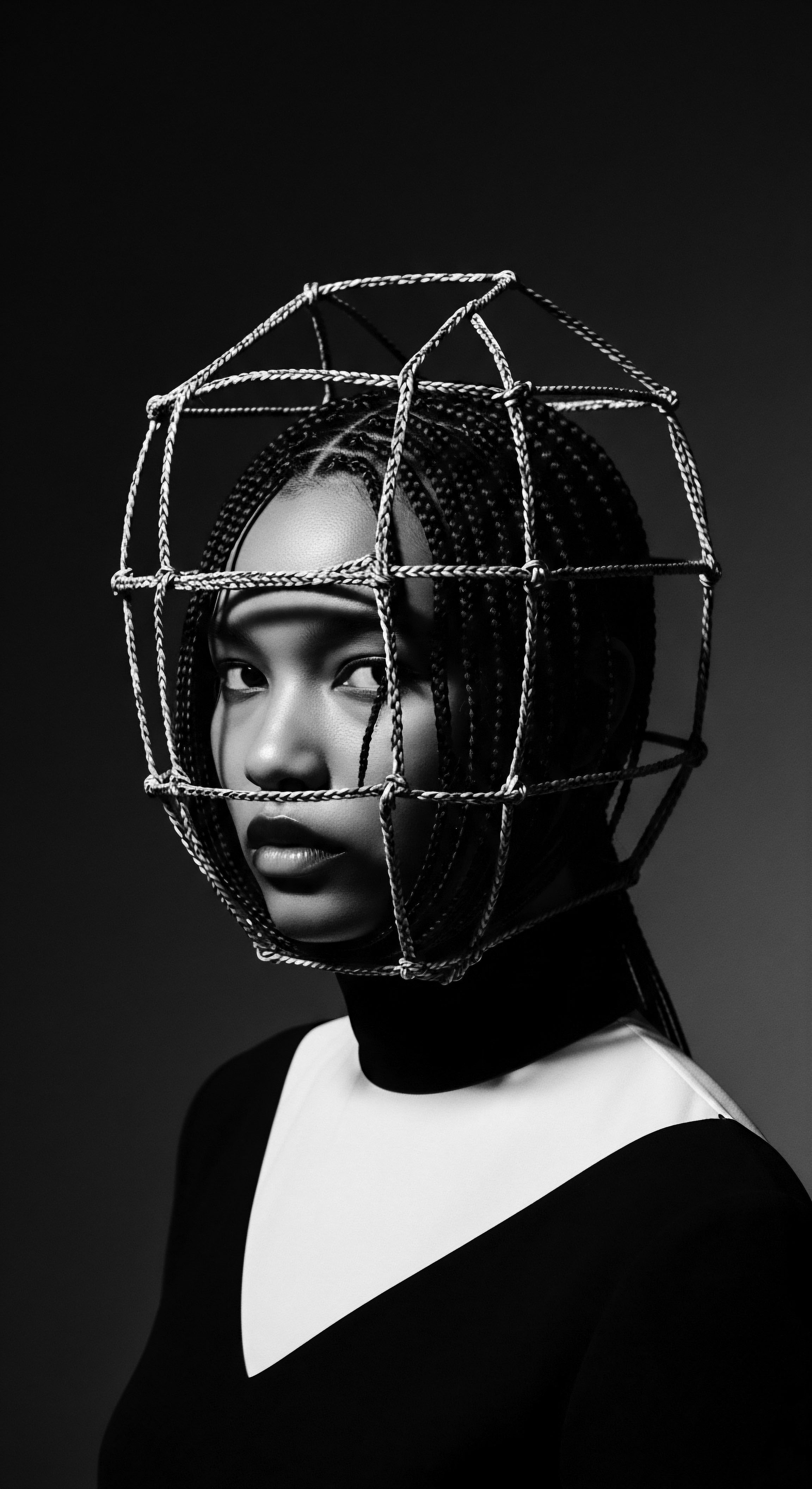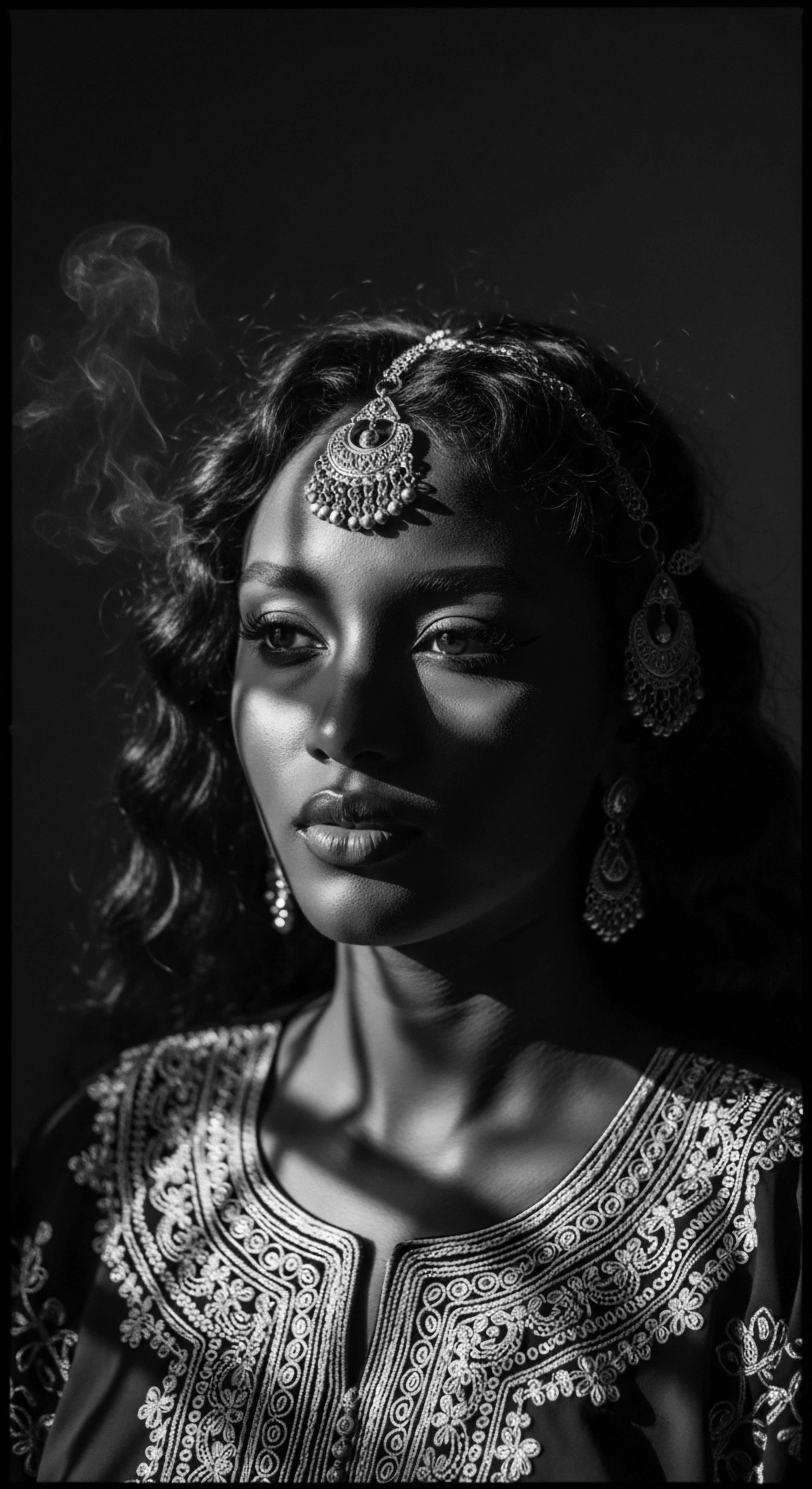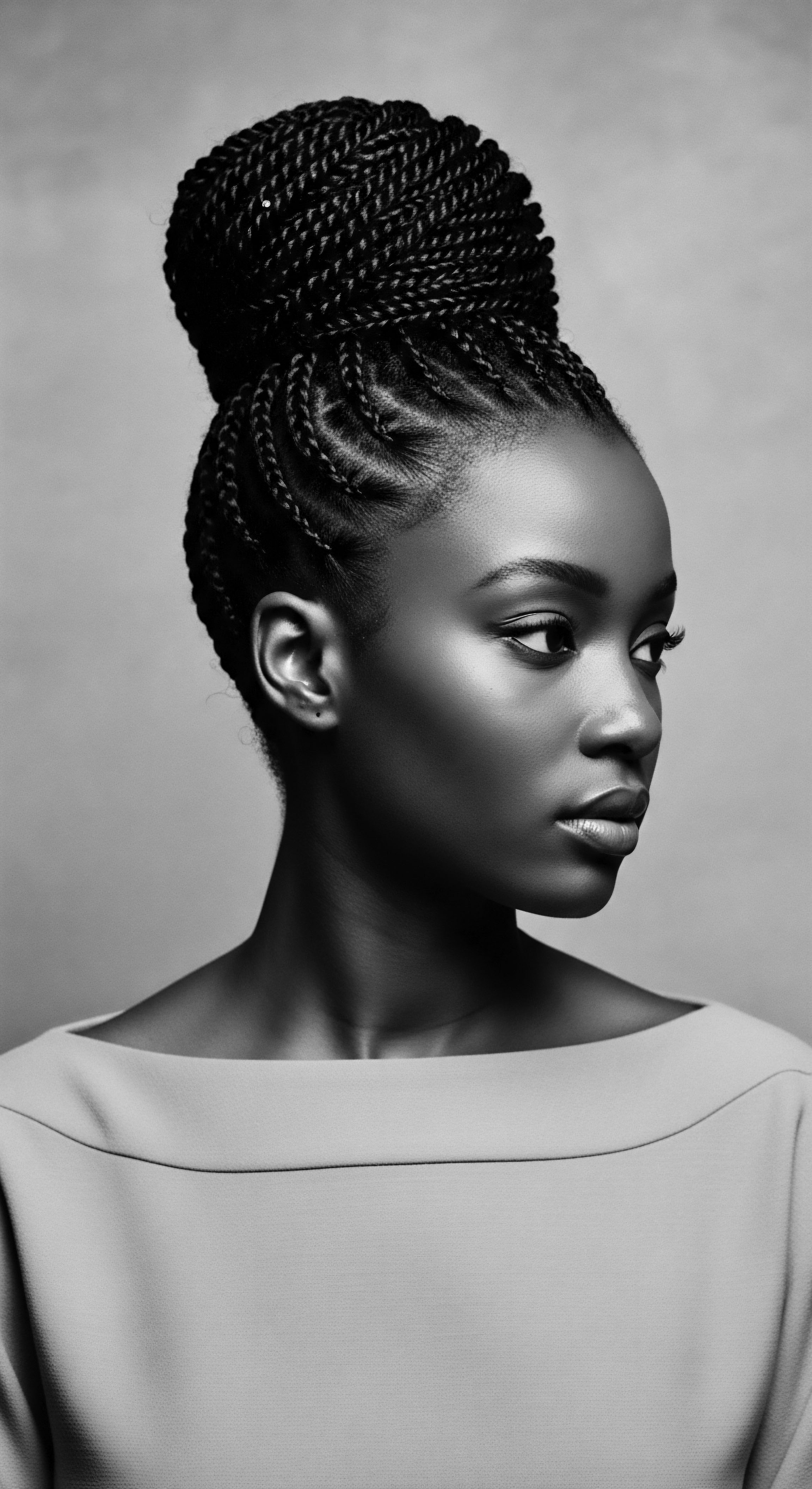
What role did textured hair play in identity movements across the diaspora?
Textured hair played a central role in identity movements by acting as a powerful symbol of heritage, cultural resistance, and self-affirmation.

What traditional ingredients were used to moisturize Afro-textured hair?
Ancestral practices used plant-based butters and oils like shea, palm kernel, and coconut to deeply moisturize Afro-textured hair, preserving its heritage.

How do hair follicles vary in textured hair?
Textured hair follicle variations, from elliptical shapes to curved growth, are an inherited heritage influencing curl patterns and care needs.

How did historical laws influence the perception of Afro-textured hair?
Historical laws altered Afro-textured hair's public perception, forcing conformity but sparking powerful acts of cultural heritage preservation.

What is the biological reason textured hair loses moisture at night?
Textured hair loses moisture overnight due to its raised cuticle structure, uneven sebum distribution, and friction, a challenge met by ancestral protective heritage.

In what ways did systemic bias influence perceptions of textured hair growth?
Systemic bias distorted perceptions of textured hair growth by imposing foreign beauty standards, dismissing ancestral practices, and misinterpreting its natural biological characteristics.

Can ancestral hair practices improve contemporary textured hair resilience and appearance?
Ancestral textured hair practices deeply rooted in heritage offer profound benefits for contemporary hair resilience and appearance.

Which traditional oils nourish Afro-textured hair?
Traditional oils like shea, castor, baobab, marula, and moringa have historically nourished Afro-textured hair, embodying a rich heritage of care.

